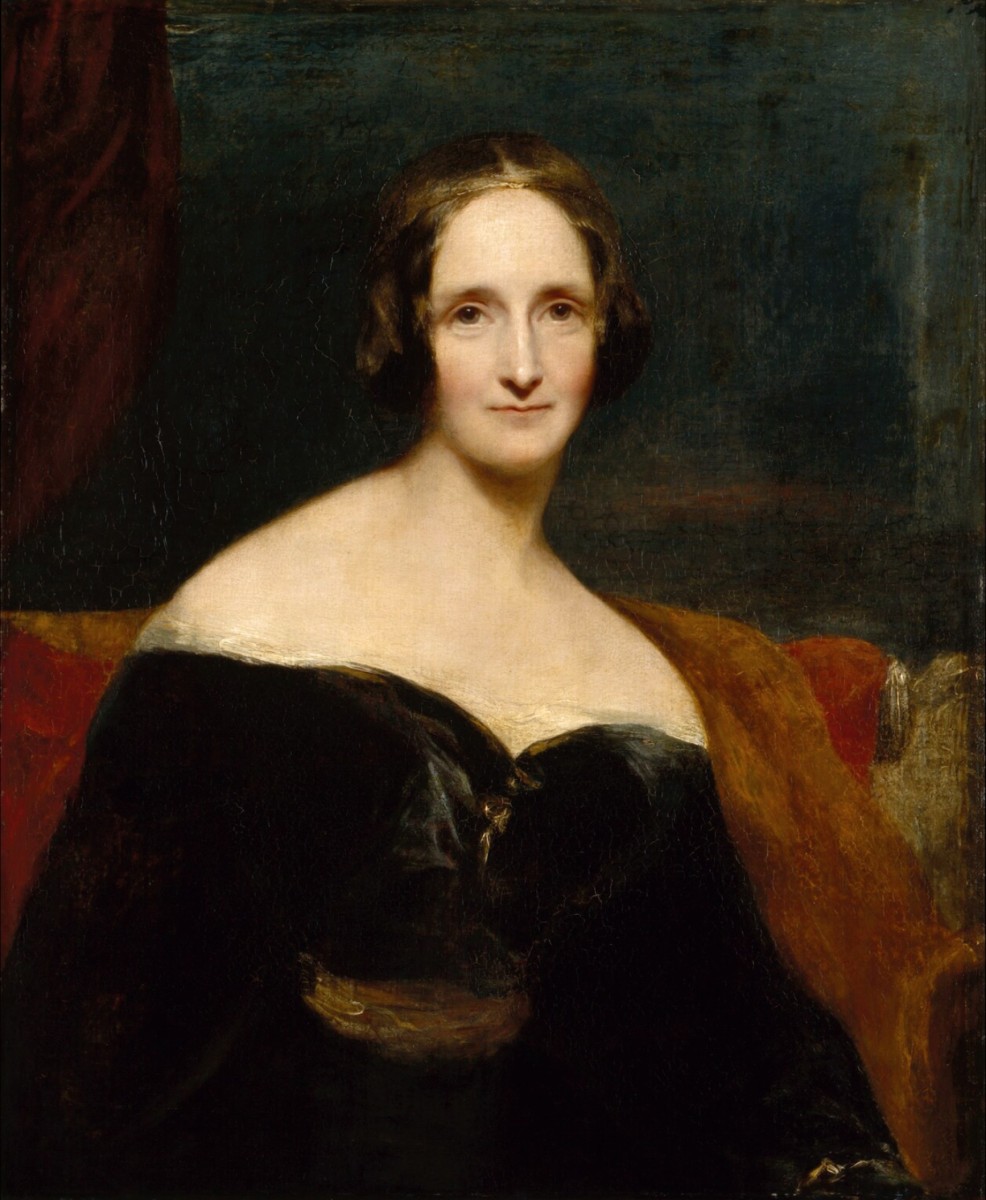I’m really glad this work is in the show. It’s a favourite of mine. It comes directly from an early, formative reading of Mary Shelley’s Frankenstein.
For me, Frankenstein is a cautionary tale about bad parenting.
 |
|---|
| Richard Rothwell's portrait of Shelley, shown at the Royal Academy in 1840. |
The tragedy of the story springs from Dr Frankenstein’s rejection of his creature. When he cannot accept his son’s difference—he just doesn’t care about him—the situation spirals into chaos and violence. He creates a son and doesn’t love him. The creature feels this hatred and flees his father’s house. After witnessing love in another family’s home and kindness from a blind man, he goes back to Frankenstein and asks him to make a partner, so he will not be alone.
Frankenstein agrees but then, frightened at the prospect that the two might breed and be beyond his control, he kills the female in front of the creature’s eyes. This drives the creature crazy, and he swears revenge, which he gets by strangling Frankenstein’s wife.
 |
|---|
| Image in Frankenstein, or the Modern Prometheus (Revised Edition, 1831). |
At this point there is no going back, only tragedy and violence. I’m a parent myself, and I’m currently doing this course where we learn to listen, empathise and validate our teen’s emotions. It’s pretty obvious to me that things might have turned out differently if only Frankenstein had been able to listen to and empathise with his son and accept him for what he was.
Empathy is a fairly important dynamic in my work. I rely on the viewer being able to tune into my creatures. I think what happens is that when people encounter the work for the first time, they are pushed away because it is so different from what is normal or natural and known to them. But after a while they start to see the commonalities that the creatures share with us. They get to know them and learn to accept their strangeness. Eventually, they see themselves in the creatures. In this push and pull, a space opens up where the viewer is free to make their own decision about what they actually feel. In this push and pull, a space opens up where the viewer is free to make their own decision about what they actually feel.
In this work there are two monsters, we find two chimeras in an intimate situation. This moment points to the idea that they have their own destiny, that they are beyond our control. Like us, they can reproduce, which means they can generate their own culture. I love the idea that they have come into this space and started to build a life for themselves. Perhaps they are on the run, but like all young people they are at the beginning of their journey and the future is in their hands.
